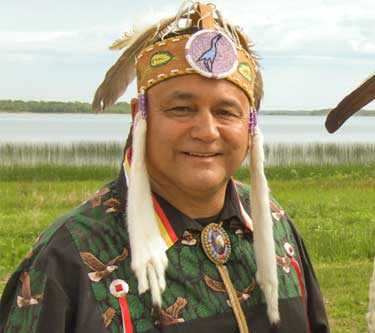NORTH BAY—It has been 165 years since the signing of the Robinson-Huron Treaty and the agreed upon annuity contained within that document in return for the resources within approximately 35,700 square miles of territory has only seen one increase, from two dollars to four, some 140 years ago.
Despite an explicit pledge to increase the stipend to be paid to the 30,000 beneficiaries living in 21 First Nation communities contained in the treaty as the revenues realized from resources reaped from those lands, the federal government has stonewalled on the issue for nearly a century and a half, according to Anishinaabek Nation Grand Council Chief Patrick Madahbee.
“The treaty is pretty clear that the annuities would increase when the resource revenue generated from the territory increased,” said Chief Madahbee. “It couldn’t be plainer that the territory has generated vast amounts of revenues from forestry, mining and other resource development. Still we receive four dollars per year. That is unfair and not what we bargained for.”
The aforementioned last increase in the annuity came in 1874.
Chief Madahbee is quite familiar with this issue, having first brought the issue forward more than 30 years ago.
The Huron-Robinson Treaty itself came about in the aftermath of a little known ‘war’ provoked by English investors who started extracting copper from a mine near Bruce Mines.
“The Chief Shinwalk and the other chiefs of the day ran those guys off their land,” said Chief Madahbee. “The government of the day sent troops up from York to negotiate a peace settlement.”
The balance of military power was quite different in those early days following Confederation, pointed out the chief. “You have to remember, the War of 1812 wasn’t that long past when all this was taking place,” he said.
Chief Madahbee noted that the First Nation leaders of the day were not as uneducated or naive as some subsequent historical interpretations by non-Natives would suggest. “These were very accomplished men in their own communities,” he said. “Whoever controlled these lands controlled the fur trade and a lot of the commerce taking place in the North. There was a significant economic component to their lives.”
Chief Madahbee used the example of Little Current founder George Abotossaway, whose ship fueling station once sat on the land now occupied by the TD Canada Trust building.
“He supplied all of the ships travelling through the area, he kept a stock of all of the things that people needed on hand,” he said. “Before that, the trading network of the Odawas stretched all the way down to interaction with the Navajo.”
The statement of claim by First Nation parties to the Huron-Robinson Treaty was filed on September 9 and includes 19 members of the Anishinaabek Nation as well as Batchewana and Shanaga.





